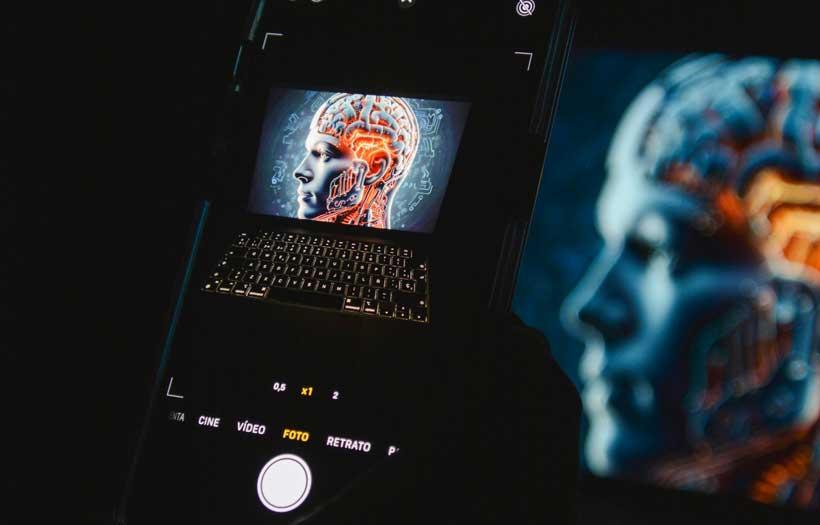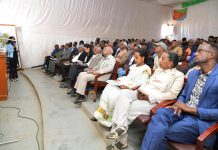By
Partha Roy
Africa-Press – Eritrea. The world’s excitement around artificial intelligence (AI) is one of the most revolutionary changes of our era. Across health, education, finance, and agriculture, these technologies hold the promise to transform societies and economies in fundamental ways. But as with all great innovations, there is the question at its core: how to make sure the goods reach the masses, not merely those with privilege? Lacking mindful structures, technological advancement threatens to entrench present inequalities, favouring already extended and advanced networks and leaving behind huge swaths of Global South and global minority populations.
Development economics can provide some guide on how we may address this problem. Among the more applicable frameworks here is Albert O. Hirschman’s Unbalanced Growth theory. According to Hirschman, nations do not require growth to take place uniformly throughout every sector. Rather, he posited that focusing resources in sectors most likely to expand can trigger forward and backward linkages. Forward linkages induce demand for related goods and services, whereas backward linkages create economic possibilities for suppliers and workers. Imbalances are not deficits but strategic drivers for wider change. This principle has fresh application with regard to new digital technologies. Development in much of today’s world is focused in a few countries and major tech firms. At first glance, this seems to exacerbate the global digital divide. However, Hirschman’s insight reveals that these centralized capacities can become levers for broader change if intentional links are established to connect the technological core to larger populations.
Take agriculture. Climate prediction, disease identification, and yield estimation tools are already enhancing productivity in technologically advanced clusters of farms. If such tools are adapted and disseminated in developing regions, particularly to small and medium-scale farmers, they could initiate growth within rural economies. In medicine, diagnostic technology for breast cancer and tuberculosis is becoming less expensive. When used in under-resourced clinics and by community health workers, the payoff is far more extensive than their original point of origination. These are back linkages in practice: innovation in one area generating reward in others. Backward linkages are equally important. Digital infrastructures need varied and representative data to be trained upon. Work such as voice recordings, image tagging, and translation generates economic opportunity for individuals in small towns and underrepresented areas. By making linguistic and cultural diversity central as an input, these communities enable worldwide innovation as well as livelihoods. Technology thus becomes not just a tool to be used but a platform to be participated in. Yet these connections do not happen by themselves. Absent purposeful policy and institutional intervention, technological innovation can be contained in elite circles. Governments, multilateral institutions, and civil society must all work together to make sure that the dividends of innovation reach everyone. This demands a long-term commitment of investment, infrastructure, and government structures to link advanced capabilities to populations everywhere. A second fundamental principle for achieving inclusive development is to think of technology as a public good. In economic theory, a public good is one that is non-rivalrous and non-excludable. It cannot be restricted from use, and the use by one person does not reduce its availability to others. Historically, examples were clean air, public parks, and national defense. With the digital revolution, digital platforms, data, and computing infrastructure can also be designed as public goods.
Why is this important? If technology is kept concentrated in proprietary systems of a few players, it may perpetuate inequality and stifle the opportunities for innovation. In contrast, public-facing infrastructure can enable the empowerment of communities, small enterprises, and new economies. Nations have already shown the potential of digital public goods. Estonia’s digital identity platform, the European Union’s open data portals, and India’s digital payments platforms have made critical services available to more people at low cost while being based on transparent and interoperable standards. Technology should be no exception. There are a variety of ways governments and international institutions can make technology a public good. Governments and international institutions should first create and disseminate critical models in the fields of healthcare, education, and social welfare. These models should be explainable and transparent, such that citizens can see and challenge decisions made about them. Second, training sets must be diverse to include linguistic, cultural, and social differences so that systems adequately represent the world of all people. Interfaces need to work for those with disabilities and in multiple languages. Third, public policy needs to provide incentives for open innovation. Financing can finance solutions to social issues, procurement rules can incentivize fairness and inclusion, and laws can require bias audits, transparency, and grievance channels. Inclusive development is not just an ethical imperative but also an economic imperative.
Constrained, closed-off systems immediately plateau, while inclusive, open, and participatory models are more robust, resilient, and scalable. Young populations globally are entering digital economies at unprecedented levels, especially in emerging markets. It is critical that they be ensured inclusion in order to achieve sustainable development. Global cooperation can further enhance these efforts. A Global Equity Council of technologists, ethicists, economists, and civil society leaders could monitor inclusion metrics, guide policymakers, and promote common standards around the world. By aligning technological advancement with global values and equitable outcomes, innovation can become a force for collective empowerment instead of division.
moderndiplomacy
For More News And Analysis About Eritrea Follow Africa-Press







